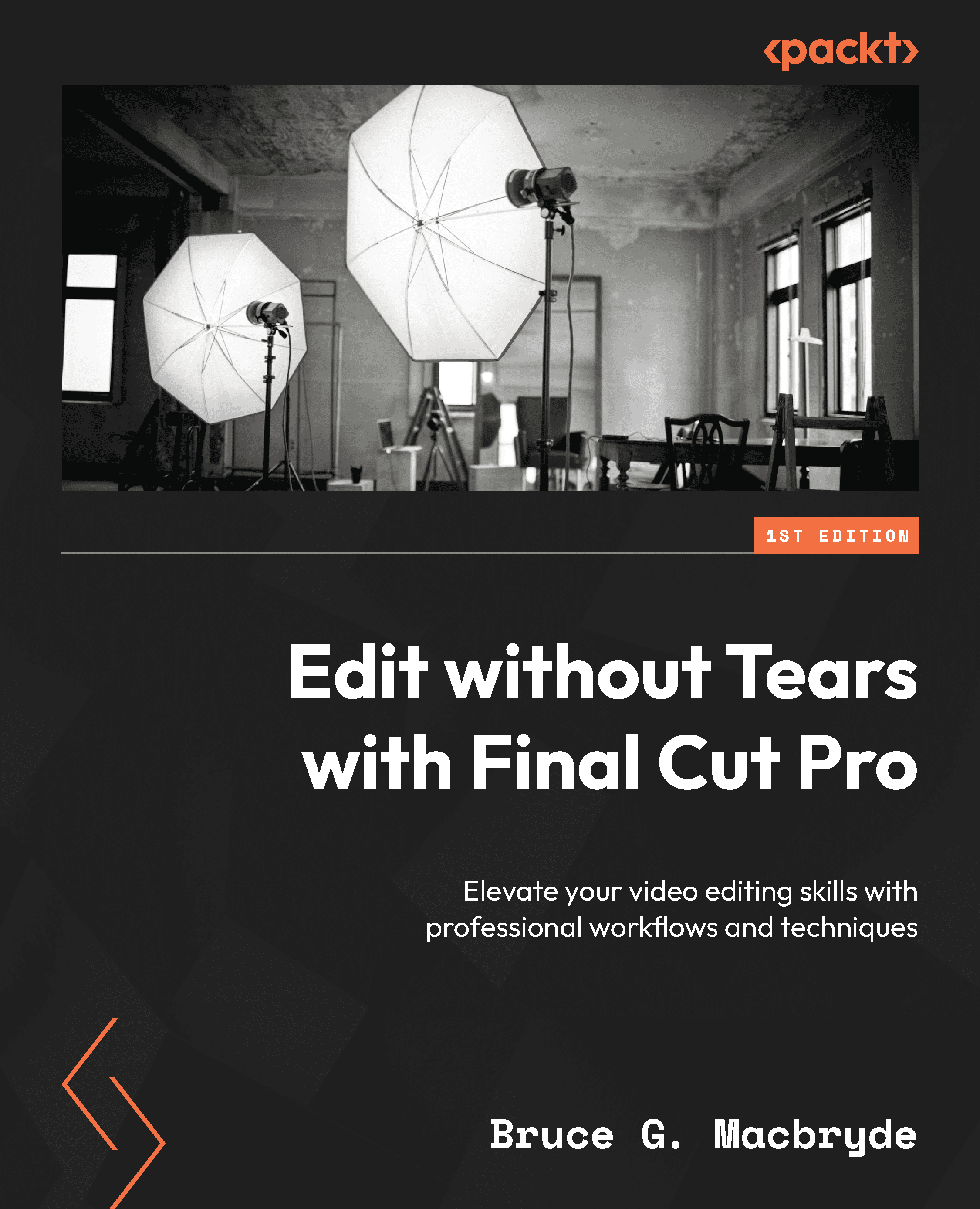Bruce G. Macbryde is the author of Edit Without Tears with Final Cut Pro; we got the chance to sit down and find out more about his experience of writing with Packt.
Q: What is the name of your book?
Bruce: Edit Without Tears with Final Cut Pro
Q: What are your specialist tech areas?
Bruce: Video editing – Final Cut Pro
Q: How did you become an author for Packt? Tell us about your journey. What was your motivation for writing this book?
Bruce: The book has been a project on my mind for several years and when the opportunity arose through Packt Publishing to receive an advance to allow me to spend the time in researching the material about video editing and Final Cut Pro in particular. I thought I knew just about everything about Final Cut Pro and a substantial amount about video editing. How wrong I was. I was not aware of the vast amount of time needed to research the material that I needed to include in the book.
Q: What kind of research did you do, and how long did you spend researching before beginning the book?
Bruce: Before agreeing to write the book, I was not aware for the vast amount of time needed to research the material that I needed to include in the book. Not only was there material that I was only superficially familiar with, but the more I dug into those subjects I found that there was much more that I had not needed in my own video editing career that was now required for the book. The problem with researching material is to separate the wheat from the chaff. There are a vast number of websites providing dubious information and more scholarly publications written by experts in the field. No matter where I sourced the material I needed to bring it back into my computer and Final Cut Pro to prove to myself that the information was not just correct, but was also up-to-date and employed the most practical methodology. Then I needed to impart that knowledge in a way that readers would be able to understand easily.
Q: Did you face any challenges during the writing process? How did you overcome them?
Bruce: Not only was researching the material a time-consuming exercise, but I also had to quickly learn the process of organizing chapters and subheading in a way that conformed with the modern publishing process.
Q: What’s your take on the technologies discussed in the book? Where do you see these technologies heading in the future?
Bruce: Video editing is headed for more and more conflict with AI. The role of the video editor will change from the mundane mechanical processes of the past to more creative roles that require the human touch.
Q: Why should readers choose this book over others already on the market? How would you differentiate your book from its competition?
Bruce: The difference with this book is it’s not just about Final Cut Pro but covers the ancillary needs that a video editor is confronted with. Explaining where the Mac computer and the Final Cut Pro application interface together. Working through the editing process from ingestion, organization, rough cut, and refining the edit. The book covers specific project workflows that the reader can follow. The editor’s job role and where they fit in within organizations showing the opportunities that can be taken. Collaboration with other editors, both on the same site and is remote distance locations is covered in detail. There is extensive analysis of color, audio and the default plugins as well as the third-party plugins for Final Cut Pro.
Q: What are the key takeaways you want readers to come away with from the book?
Bruce: Editors who have learned Final Cut Pro by self-taught osmosis and feel confused by the terminology and the challenge of “where to start” will find workflow processes to give them a leg up. Video editing is more than just using an editing application.
Q. What advice would you give to readers jumping into this technology? Do you have any top tips?
Bruce: Become familiar with the basic concepts of video editing, particularly an understanding of the principle that editing is removing unwanted material rather than just adding bells and whistles.
Q: Can you share any blogs, websites, and forums to help readers gain a holistic view of the tech they are learning? What are the key takeaways you want readers to come away with from the book?
Bruce: https://www.youtube.com/c/VideoTutors
Q. How would you describe your author’s journey with Packt? Would you recommend Packt to aspiring authors?
Bruce: Packt has all the practical material that you need to start writing your own book. All you need to be the will to do it and the knowledge of your chosen subject
Q. Do you belong to any tech community groups?
Q. What are your favorite tech journals? How do you keep yourself up to date on tech?
Bruce: https://larryjordan.com/newsletter-signup/
Q. How did you organize, plan, and prioritize your work and write the book?
Bruce: Keep a time slot available every day for the book, writing, or researching
Q. What is that one writing tip that you found most crucial and would like to share with aspiring authors?
Bruce: Use a thesaurus
Q. Would you like to share your social handles? If so, please share.
Bruce: https://www.youtube.com/c/VideoTutors
You can find Bruce’s book on Amazon by following this link: Please click here









